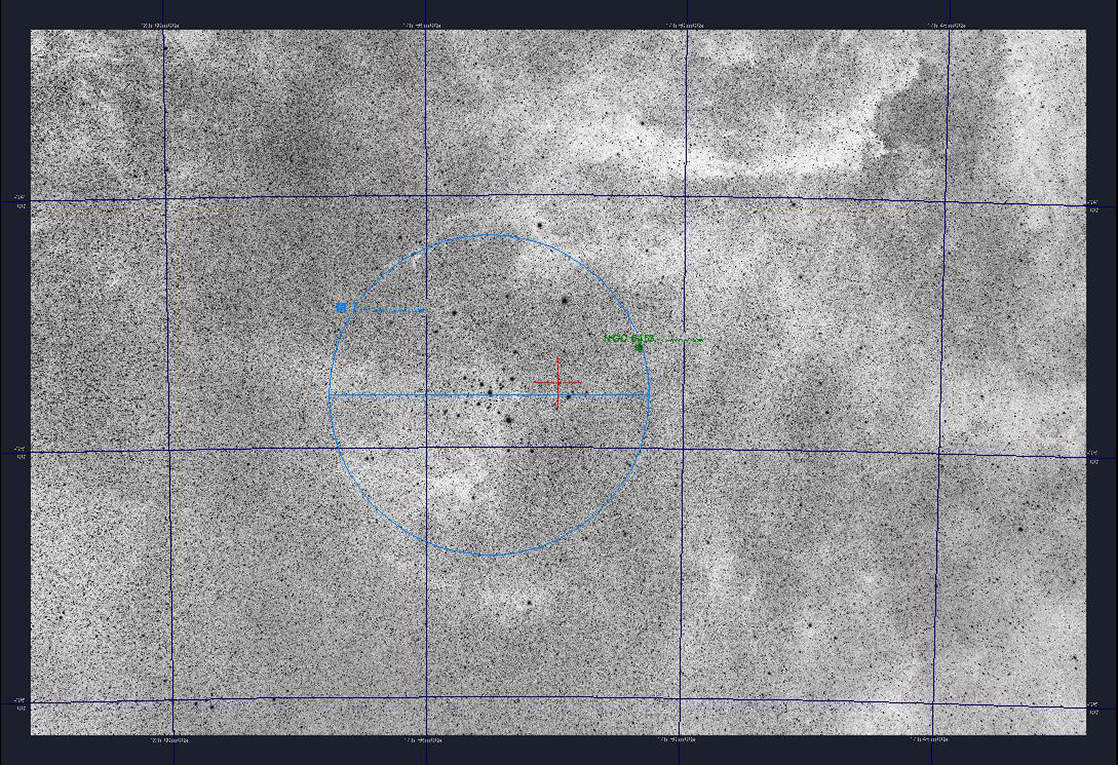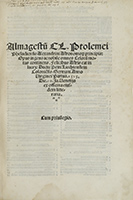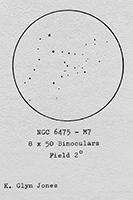 |
||
| Al di la della Luna; Beyond the Moon; Astrophotography; Astrofotografia; Danilo Pivato | ||
 |
||||||||
Photo: Danilo Pivato © Copyright: - Images & texts 2021 - All rights reserved |
||||||||
The Analysis of Frame |
||||||||
M 7: NGC 6475;ocl 1028.0; C 1750-348; Ptolemy's Cluster; cl VDBH 254; --- Open (galactic) Cluster - [field: 2,8° x 4,1°]--- Mag. Limite: 17,9^ - 18,1^ (r) - Fonte: USNO A2 --- Object Coordinates RAJ2000.0: 17h 53m 51.0s --- Dec J2000.0: -34° 47' 36" [SIMBAD] --- Magnitudine: 3.3^ (v); --.---^ (b); -,--^ (r) --- Surface Brightness: --.-^ - Object Size: 80.0' --- Position Angle: --° --- Object Classification: SA(s)c D ---; Redshift z(~): -0.000049 --- Spectrum:. |
||||||||
M7 è un ammasso galattico visibile ad occhio nudo anche dalle nostre latitudini a circa 4° NE della stella Lambda Sco, soprattutto quando il cielo è buio e trasparente. In presenza di Luna piena, e in alta montagna, sono riuscito in più di una occasione ad identificarlo. Con una declinazione di -34,8° è l'oggetto appartenente al catalogo di Messier più meridionale. Conosciuto fin dall'antichità classica, fu documentato per la prima volta dall'astronomo greco Claudio Tolomeo, nel II secolo (130 a.C.), il quale lo descrisse ( ...girus ille nebulosus) come una macchia nebulosa diffusa, quando compilò il suo catalogo stellare: l'Almagesto. A causa della sua decisa posizione meridionale in Europa l'ammasso M7 non fu più osservato per diversi secoli, o per lo meno non abbiamo testimonianze, sino a quando l'astronomo italiano Giovanni Battista Hodierna l'osservò per primo nel 1654 e vi contò 30 stelle, riconoscendone la sua vera natura stellare. E' più grande e brillante del vicino M6, spesso impiegato come termine di paragone. Secondo Kenneth Glyn Jones - USA, M7 fu inoltre l'ultimo elemento trovato nell'elenco delle "16 stelle nebulose" elencate e pubblicate da William Derham nel 1733 che egli stesso osservò con il suo cannocchiale lungo 16 piedi. Di questa testimonianza ci è pervenuta la sua descrizione: " ...disteso tra la coda dello Scorpione e l'arco del Sagittario". In realtà il Derham non osservò mai l'ammasso M7, ma ci spiega di aver trascritto l'elenco delle stelle nebulose dal Prodromus Astronomiae di Hevelius, del 1690 (catalogo di stelle creato da Johannes Hevelius e pubblicato postumo da sua moglie Elisabeth Hevelius). Jones puntualizza che gli ultimi due elementi dell'elenco di Derham, tuttavia, non erano derivati dall'Hevelius, che in ogni caso non sarebbe mai stato capace di osservarli dalla città polacca di Danzica, la sua città natale, (lat +54°), ma tratti dal Catalogus Stellarum Australium di Halley del 1678. L'elenco fu pubblicato nel 1715 come n29 nel catalogo di Halley. La stessa visione di Hodierna dell'ammasso M7 la ebbe dal Capo di Buona Speranza nel 1752 Nicolas Louis de Lacaille. Il 23 maggio 1764 l'astronomo francese Charles Messier catalogò l'ammasso come il settimo oggetto della sua famosa lista di oggetti simili alle comete. L'astronomo inglese John Herschel lo descrisse nel 1864 come "...ammasso di stelle grossolanamente sparse, molto luminoso, piuttosto ricco e poco compresso". Le osservazioni telescopiche dell'ammasso rivelano circa 80 stelle in cui, secondo uno studio eseguito da A. Wallenquist nel 1959, in un campo visivo di 1.3° ci sarebbero stelle più luminose della 10^ magnitudine. Il corpo principale di M7 è costituito da 24 stelle di magnitudine compresa tra la 5,6^ e 9,3^ distribuiti per un diametro di 80'. La distanza stimata dell'ammasso dalla Terra è di 980 anni luce, ciò corrisponde a un diametro effettivo di 25 anni luce. L'età dell'ammasso è circa 200 milioni di anni, mentre la stella più brillante in esso contenua è di magnitudine 5,6^ e spettro G8. In termini di composizione, l'ammasso contiene un'abbondanza di elementi diversi dall'idrogeno e dall'elio simile a quella del Sole. Il 29 agosto 2006, M7 è l'unico ammasso galattico che, per ragioni prospettiche, all'interno dei suoi confini , ospita anche un ammasso globulare. Si tratta di NGC 6453, il quale ha una magnitudine (v) di 10..4^ di dimensioni apparenti di 3'. Messier 7 fu utilizzato per la prima luce del telescopio LORRI (Long Range Reconnaissance Imager) situato sulla sonda New Horizons in occasione della spedizione verso Plutone. Subito a sud dell'ammasso M7 si estende la nebulosa oscura B 287. NGC 6444 è invece un ammasso aperto, 50' ad ovest di M7. |
||||||||
| c'è | ||||||||
|
||||||||
| Historical observations and descriptions: | ||||||||
| May 23, 1764. 7. 17h 38m 02s (264d 30' 24") -34d 40' 34" A star cluster, more considerable than the preceding [M6]; to the naked eye, this cluster looks like a nebulosity; it is little distant from the preceding, placed between the bow of Sagittarius & the tail of Scorpius. (Diam. 30') [Handwritten remark:] Lacaille has it. [Mem. Acad. for 1771, p. 438 (first Messier catalog)] Ptolemy (about 130 A.D.; Almagest): No. 567. ... A nebulous cluster following the sting of Scorpius. Ulegh Begh: Ulegh Begh 564 Hodierna: Ha II.2. Halley (1678): Halley No. 29. -- [Catalog of Southern Stars] No. 29. Nebulous star at longitude 264:00, latitude -13:25:05 (1678), = RA 17:53.8, Dec -36:53:42 (2000.0) Derham: No. 16 -- (2nd appended) (1733) [Nebulosa (nebulous star)] Between Scorpio's Tail, and the Bow of Sagittarius, at 14d 32' 00" Scorpio Long. and 11d 25' 00" S. Lat. De Chéseaux: De Ch. No. 10. -- [Together with No. 9 = NGC 6231] "The two last [objects] of the catalog of Messieurs Derham and Maupertuis." Lacaille: Lac II.14.
17:37:12, -34:39:55. Bode: Bode 41 -- "A star cluster." William Herschel: [Unpublished Observations of Messier's Nebulae and Clusters. Scientific Papers, Volume 2, p. 651] John Herschel (1847): h 3710. : h 3710 [ = M. 7] Sweep 791 (June 7, 1837). [JH wrongly assigns his h 3708 = NGC 6453, a globular cluster discovered by him, "= M. 7?"] John Herschel, -- General Catalogue: GC 4340. GC 4340 = h 3710 = M7 (Lacaille). RA 17h 44m 40s, NPD 124d 46.5m (1860.0) [Right Ascension and North Polar Distance] Cl, vB, pRi, lC, st 7...12; = M7 Cluster, very bright, pretty rich, little compressed, stars from 7th to 12th magnitude. Remark: Figure in Blanchini [Observationes Selectae, Verona, 1737], p. 231.
|
||||||||


